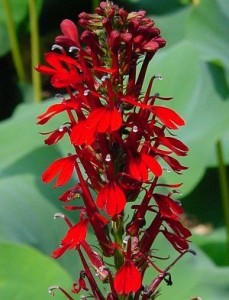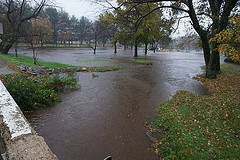 With the help of New Castle County workers and numerous volunteers, Swift Park, located in Hockesssin, Delaware off of Old Lancaster Pike, now has two vegetated swales leading to a small tributary of the White Clay Creek. Vegetated swales are a type of BMP (Best Management Practice) as stated by the EPA (Environmental Protection Agency) and serve many purposes, its biggest contribution being to help better manage the stormwater runoff that can contaminate your drinking water.
With the help of New Castle County workers and numerous volunteers, Swift Park, located in Hockesssin, Delaware off of Old Lancaster Pike, now has two vegetated swales leading to a small tributary of the White Clay Creek. Vegetated swales are a type of BMP (Best Management Practice) as stated by the EPA (Environmental Protection Agency) and serve many purposes, its biggest contribution being to help better manage the stormwater runoff that can contaminate your drinking water.
What's the big deal? Water is everywhere. In fact, the earth is comprised of over 70% water. The problem, less than 1% of that is safe drinking water! This is where BMPs and stormwater management become incredibly important to protecting water quality and quantity, not only for today, but for future generations.
The swales at Swift Park were originally installed to help with stormwater runoff coming from the impermeable surface area of the paved parking lot adjacent to Mill Creek. The original swales were lined in turf grass and mowed on a regular basis, with the main function being to convey water away from the parking area and into the creek. While this is good for parking, this does little to help with water quality. A better way to use these swales is to vegetate them with a native plant community, and that is what the White Clay Wild and Scenic Program, along with New Castle County, North Creek Nurseries, and funding from Delaware Department of Natural Resources and Environmental Conservation (DNREC) set out to do this past year.
The primary goal of the swales, as stated earlier, is to convey stormwater, but they can also function to help slow down, spread out, and soak in stormwater runoff from smaller, more typical rain events. They were not created to manage the larger storm events we have seen in recent years, such as Hurricane Sandy (seen below, pre-planting). However, newly vegetated, the swales are now trapping some of the sediment (dirt and debris) that would have ordinarily made its way directly into the creek as well as filtering out some of the nutrients.
Prior to these swales being installed, the water would sweep debris, chemicals, and anything in its path off the roads and parking lot, through the grass, and eventually into the creek, where it can pollute your drinking water. Now, during smaller, more common rain events of 1" or less, water runs into the swales, is slowed down by the vegetation, and the same polluted runoff has a better chance of infiltrating the ground. The native plants in turn help filter and infiltrate the water before it reaches the creek. This may seem like a small contribution to water quality improvement, and in commercial areas where there is more development and impervious surface coverage, it is difficult to completely control stormwater runoff. But every little thing we do adds up, and one easy way we can all better manage stormwater is by utilizing green infrastructure (native plant based BMPs) that can be as simple as a vegetated swale or small rain garden on your own property.

As if water quality wasn't enough, vegetated BMPs support native wildlife by providing habitat refuges. Native plants provide food and shelter for many species of animals. They do all this, and with proper care can also be beautiful landscapes! These swales in particular have many native plants that should begin blooming with in the first growing season, such as Lobelia cardinalis (Cardinal flower) seen blooming to the right which attracts hummingbirds with its shocking red, tubular flowers. You can find a full plant list used at Swift Park at the bottom of the page. Soon enough, the swales will be completely filled in with the native plants that are sure to be more attractive to park goers and wildlife alike; at the same time helping to improve your drinking water, little by little.
Native Plant List for Swift Park Swales:
Creek sedge (Carex amphibola)
Emory’s sedge (Carex emoryi)
Turtlehead (Chelone glabra)
Hot lips turtlehead (Chelone lyonii 'Hot Lips’)
Tufted hairgrass (Deschampsia cespitosa)
Hardy ageratum/ Eupatorium (Eupatorium coelestinum)
Blue flag iris (Iris versicolor)
Soft rush/ Poverty rush (Juncus effuses/ Juncus tenuis)
Spike gayfeather (Liatris spicata)
Cardinal flower (Lobelia cardinalis)
Great blue lobelia (Lobelia siphilitica)
Virginia bluebells (Mertensia virginica)
Eastern bee balm (Monarda bradburiana)
Obedient plant 'Pink manners' (Physostegia v. 'Miss Manners')
Appalachian mountain mint (Pycnanthemum muticum)
Golden groundsel (Senecio aureus)
Fireworks goldenrod (Solidago rugosa 'Fireworks')
For more on native plant suggestions, click here.
To view photo gallery from project, click here.
-article written by Ed Trommelen, summer intern 2013
To learn more about stormwater BMP's check out the video below created by the EPA.
